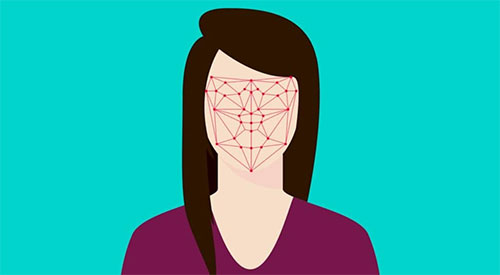Kroger and Walgreens Installing Cameras in Stores to Read Shoppers’ Facial Expressions to Sell Them More Stuff
More Creepy Surveillance Capitalism
It’s reasonable to expect stores to install security cameras to protect themselves from theft and property damage. But is it reasonable for them to install facial recognition cameras to determine shoppers’ moods to try to sell them more stuff?

After all, stores are already able to collect data from shoppers who use store discount cards. Why is it now necessary for them to know how elated we are when we find toilet paper on sale? D’oh! It’s so they can try to sell us more stuff.
Facial recognition cameras for data collection are one method of what’s referred to as “Surveillance Capitalism.” Many people still aren’t aware of how much of this has already been going on. And if you shop at Kroger and Walgreens – cameras may already be analyzing you.
It’s a new technology being trotted out to retailers, where cameras try to guess your age, gender or mood as you walk by. The intent is to use the information to show you targeted real-time ads on in-store video screens.
With store cameras, you may not even realize you are being watched unless you happen to notice the penny-sized lenses. And that has raised concerns over privacy.
“The creepy factor here is definitely a 10 out of 10,” said Pam Dixon, the executive director of the World Privacy Forum, a nonprofit that researches privacy issues.
The screens can also be placed at the drive-thru. A minivan pulling into a fast food restaurant, for example, might get an ad for a family-sized meal on the video screen menu.
For now, the cameras are in just a handful of stores.
Kroger, which has 2,800 supermarkets, is testing cameras embedded in a price sign above shelves in two stores in the suburbs outside Cincinnati and Seattle. Video screens attached to the shelves can play ads and show discounts. Kroger said the cameras guess a shopper’s age and sex but the information is anonymous and the data is not being stored. If the tests work out well, the company said it could expand it into other locations.
Walgreens, which has more than 8,000 drugstores, installed cooler doors with cameras and sensors at six locations in Chicago, New York, San Francisco and Bellevue, Washington.
Instead of the usual clear glass doors that allow customers to see inside, there are video screens that display ads along with the cooler’s contents.
Above the door handle is a camera that can try to guess ages and track irises to see where you are looking, but Walgreens said those functions are off for now. The company said the cameras are currently being used to sense when someone is in front of the cooler and count the number of shoppers passing by. It declined to say if it will turn on the other functions of the camera.
“All such enhancements will be carefully reviewed and considered in light of any consumer privacy concerns,” Walgreens said.
Calvin Johnson, who was looking for a Snapple, said he visited the store before, but didn’t notice the cameras until a reporter pointed them out.
“I don’t like that at all,” Johnson said.
Jon Reily, vice president of commerce strategy at consultancy Publicis.Sapient, said retailers risk offending customers who may be shown ads that are aimed at a different gender or age group. Nonetheless, he expects the embedded cameras to be widely used in the next four years as the technology gets more accurate, costs less and shoppers become used to it.
For now, he said, “we are still on the creepy side of the scale.” For real. But this is also how tech giants like it.
Utility “Smart” Meters are also a form of “Surveillance Capitalism.” Some utility companies even brag about collecting customer data and sharing it with 3rd parties. Of course, utility “Smart” Meters have also been associated with so many other issues too – including fires and explosions.
Does any of this seem reasonable?
yogaesoteric
December 3, 2019
